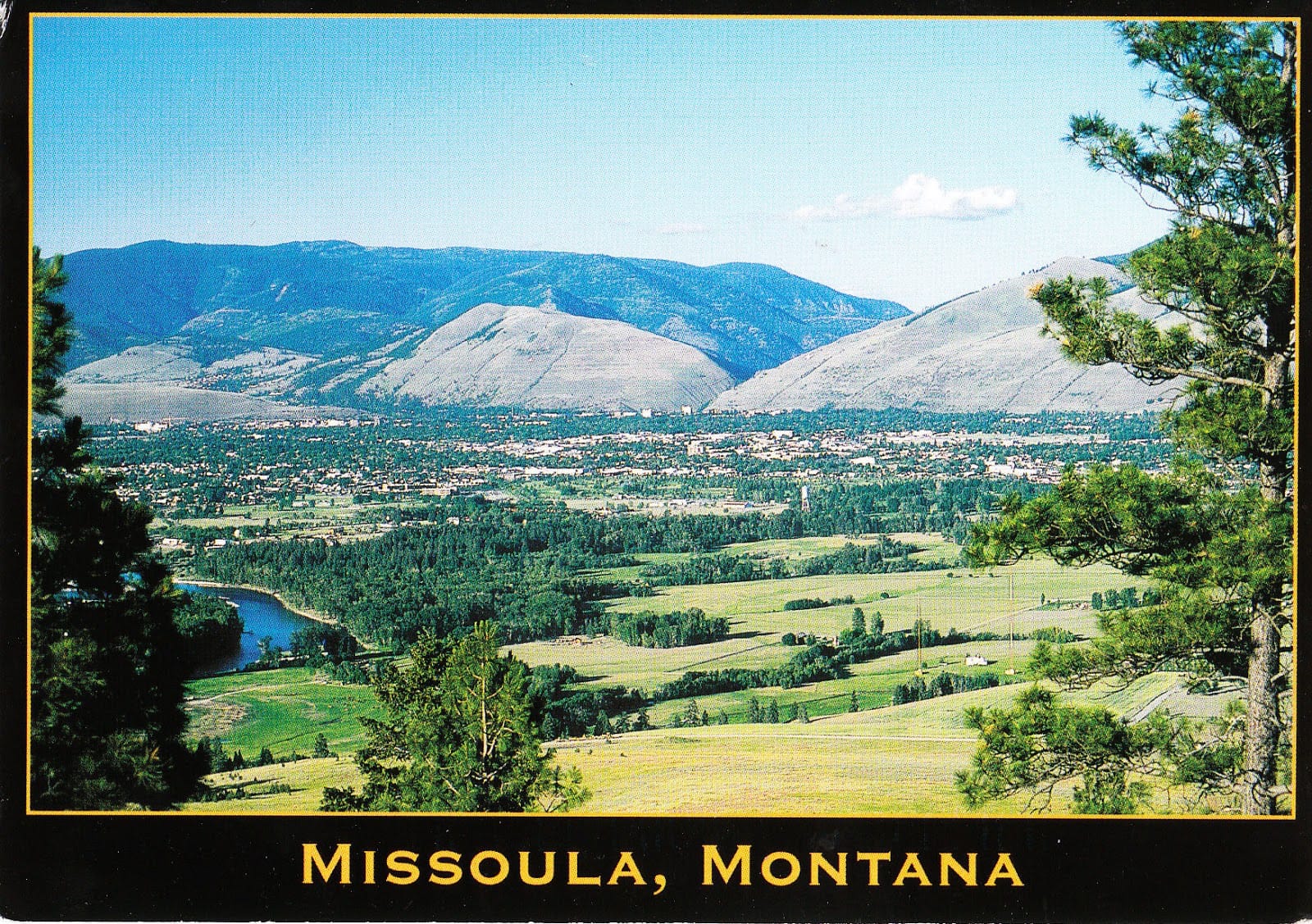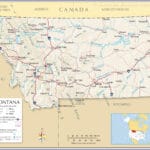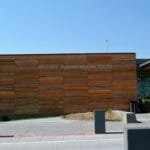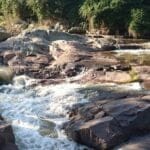Missoula, Montana, rests at the confluence of five valleys in western Montana, boasting a base elevation of 3,209 feet (978 meters) above sea level. This elevation significantly influences the city’s character, shaping its climate, ecosystems, and the lifestyle of its nearly 78,000 residents. From the snow-capped mountains to the valley floor, elevation plays a key role in what makes Missoula unique.
Understanding Missoula’s Varied Terrain
Missoula sits in a valley, surrounded by mountains that rise well above 5,000 feet, including Mount Sentinel and Mount Jumbo. This dramatic elevation gradient creates diverse microclimates and habitats. While the city itself enjoys a relatively moderate climate, temperatures can drop noticeably as you ascend the surrounding peaks. This varied terrain adds to the scenic beauty and recreational opportunities within the area.
How Elevation Shapes Missoula’s Climate
Missoula’s elevation acts as a natural moderator, influencing temperature and precipitation. Summers are generally warm and sunny, ideal for floating the Clark Fork River or hiking scenic trails. Winters, while snowy, are often less extreme than in higher-elevation areas of Montana. However, microclimates within the valley mean that temperatures can vary, with higher elevations experiencing colder conditions. The interaction between elevation and temperature likely influences rainfall patterns, although further research is needed to fully understand these complex relationships.
Recreation: From Riverside Trails to Mountain Peaks
Missoula’s unique geography caters to a wide range of outdoor activities. The valley floor provides easy access to riverside parks and paved trails, perfect for leisurely strolls or bike rides. For those seeking more challenging adventures, the nearby mountains offer opportunities for hiking, mountain biking, and rock climbing. In winter, these same mountains transform into a snowy playground for skiers and snowboarders, with several resorts within easy reach. This proximity to both valley and mountain recreation is a significant part of Missoula’s appeal. Discover the current Klamath Falls Oregon population and uncover the fascinating demographic shifts in this vibrant southern Oregon city.
A Thriving Ecosystem: Life at Different Altitudes
The elevation gradient surrounding Missoula supports an impressive diversity of plant and animal life. The valley floor is home to grasslands and riparian areas, while ascending the mountains reveals forests of ponderosa pine and Douglas fir, eventually giving way to subalpine meadows and rocky peaks. This variety in habitat allows for a wide range of species to thrive. Elk and deer might migrate seasonally, following the changes in vegetation at different elevations, while various bird species occupy specific niches within these varied ecosystems. Ongoing research suggests that the interplay between elevation, climate, and species distribution is complex and may be further influenced by climate change. Explore the unique high-altitude environment by delving into the specifics of the Laramie WY elevation and how it shapes the town’s character.
Missoula: A City Where Wilderness Meets Urban Life
Missoula itself is a vibrant city of approximately 78,000 people, drawn to the area’s unique blend of urban amenities and access to the great outdoors. The city sits at the edge of wilderness, allowing residents to seamlessly transition between city life and untamed nature. This proximity to both urban conveniences and pristine wilderness is a defining characteristic of Missoula.
A Glimpse into Missoula’s Rich History
Evidence suggests that humans have inhabited the Missoula valley for over 12,000 years. The area later became a significant trading post, shaping its cultural development. Today, Missoula is a cultural hub, home to the University of Montana and a thriving arts community. Its history, as diverse as its landscape, continues to unfold, influenced by the same geographical features that have shaped its past.
Why is Missoula so Popular?
Missoula’s popularity stems from a convergence of factors, from its stunning natural beauty and diverse recreational opportunities to its vibrant culture, thriving economy, and strong sense of community. Let’s explore these elements in more detail:
Nature’s Playground
Located at the heart of five valleys where three rivers meet, Missoula is a natural haven for outdoor enthusiasts. With its crystal-clear rivers perfect for fly-fishing, miles of hiking trails through lush forests, and winter ski slopes, the area offers something for every level of adventurer. This easy access to nature contributes significantly to the city’s active lifestyle and overall appeal.
Culture and History: A Rich Tapestry
Missoula is steeped in history and culture, with a vibrant arts scene, historic theaters, and a strong literary tradition. The University of Montana adds to this cultural richness, attracting a diverse and intellectually curious population. The city’s Salish heritage, reflected in its historical name “Nemissoolatakoo,” further enriches its cultural tapestry.
Opportunity and Affordability
Missoula’s economy has diversified beyond its historical roots in resource-based industries. The University of Montana plays a vital role in this economic diversification, fostering innovation and attracting a skilled workforce. Furthermore, Missoula offers a relatively affordable cost of living compared to other mountain towns, making it an attractive option for young professionals and families.
A Strong Sense of Community
One of Missoula’s most defining characteristics is its strong sense of community. The friendly atmosphere, local involvement, and genuine connections create a welcoming environment. This sense of belonging contributes significantly to the city’s appeal and makes Missoula feel like home.
| Factor | Description |
|---|---|
| Natural Beauty | Five valleys, three rivers, and surrounding mountains offer diverse recreational experiences. |
| Culture and History | Thriving arts, historical significance, Salish heritage, and the University of Montana create a vibrant cultural environment. |
| Economy & Affordability | Diversified economy, driven by the university and other sectors, coupled with a relatively low cost of living. |
| Community | Strong community bonds, local engagement, and a welcoming atmosphere foster a sense of belonging. |
Does It Snow a Lot in Missoula?
Missoula experiences a moderate amount of snowfall, averaging 39.5 inches annually. While this is higher than the US average of 28 inches, it’s comparable to other parts of Montana. Snowfall typically begins in November and continues through April, with December being the snowiest month, averaging 11.1 inches. However, snowfall can vary significantly from year to year, with December totals ranging from a few inches to over 14 inches. Despite the snowfall, most storms result in less than an inch of accumulation, with only about four days per year experiencing ten inches or more.
What’s the Coldest It’s Ever Been in Missoula?
The coldest temperature ever recorded in Missoula was -33°F (-36°C) on January 26, 1957. While Montana’s record low is -70°F at Rogers Pass, Missoula’s valley location typically moderates extreme temperatures. However, the winter of 2019 offered a reminder of the city’s potential for cold snaps, experiencing its coldest start in 40 years. These variations highlight the importance of understanding and preparing for Missoula’s unique climate.
















